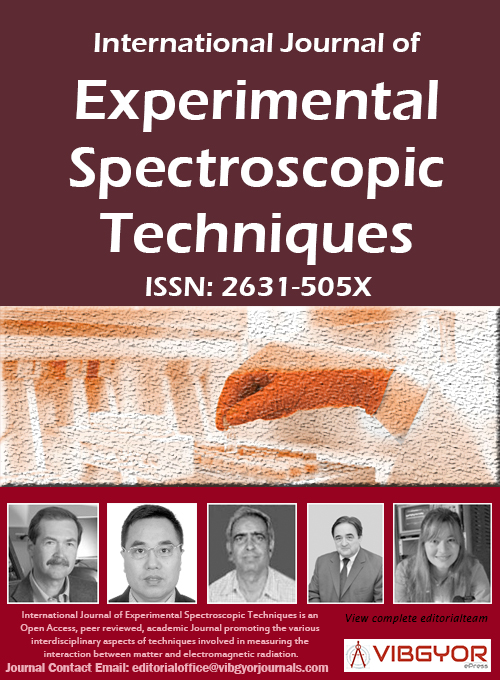
International Journal of Experimental Spectroscopic Techniques
(ISSN: 2631-505X)
Volume 3, Issue 2
Research Article
DOI: 10.35840/2631-505X/8520
Deep and Shallow Core Excitation and Ionization of Atoms and Molecules
ACF Santos*
Figures
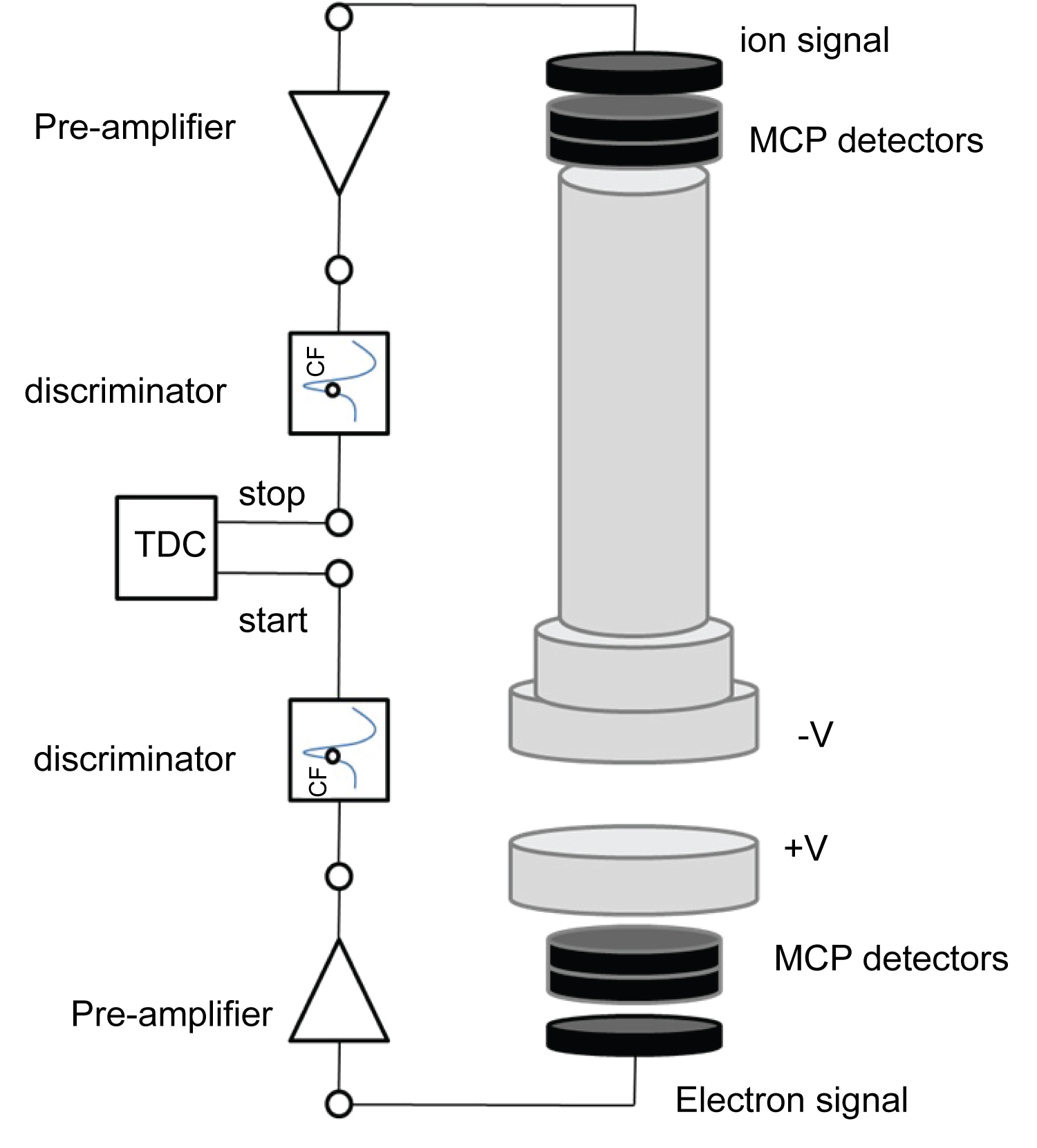
Figure 1: Time-of-flight spectrometer and associated electronics...
Time-of-flight spectrometer and associated electronics.

Figure 2: Typical Ne ions time-of-flight charge-state...
Typical Ne ions time-of-flight charge-state distributions following K-shell vacancy production. The mass resolution allowed a clear isotope separation.

Figure 3: Partial ion yield of Neq+ions following K-shell...
Partial ion yield of Neq+ions following K-shell vacancy production as a function of the X-ray energy.
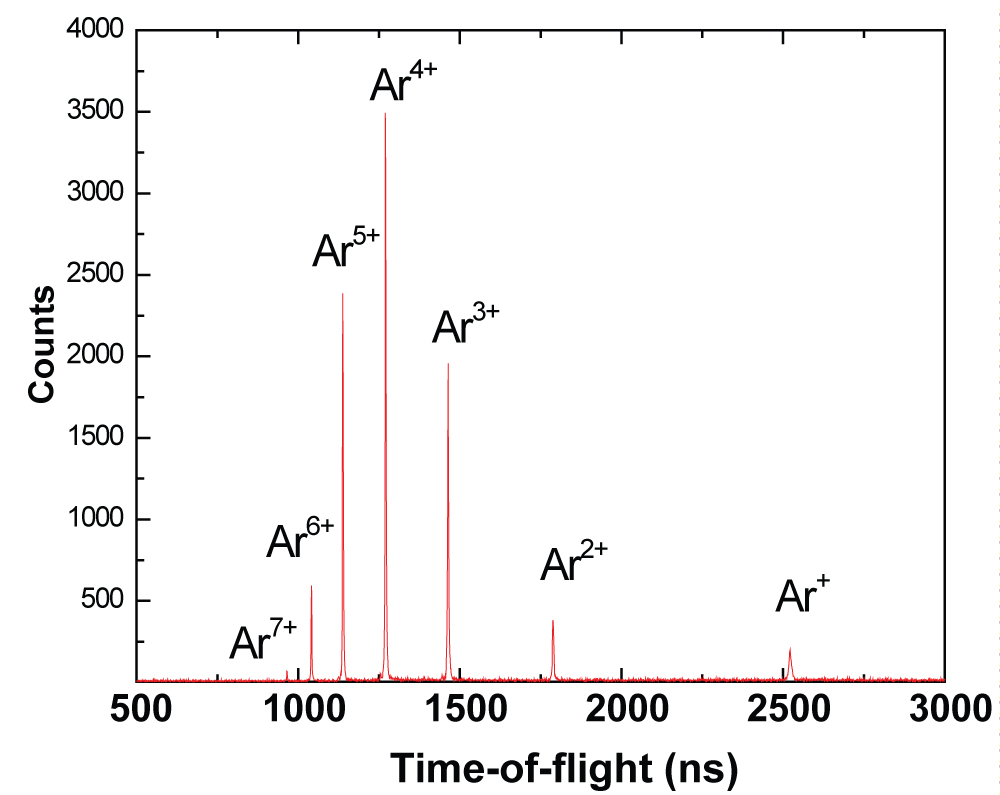
Figure 4: Time-of-flight spectra of Ar corresponding to the...
Time-of-flight spectra of Ar corresponding to the photoionization by 3145.04 eV photons.
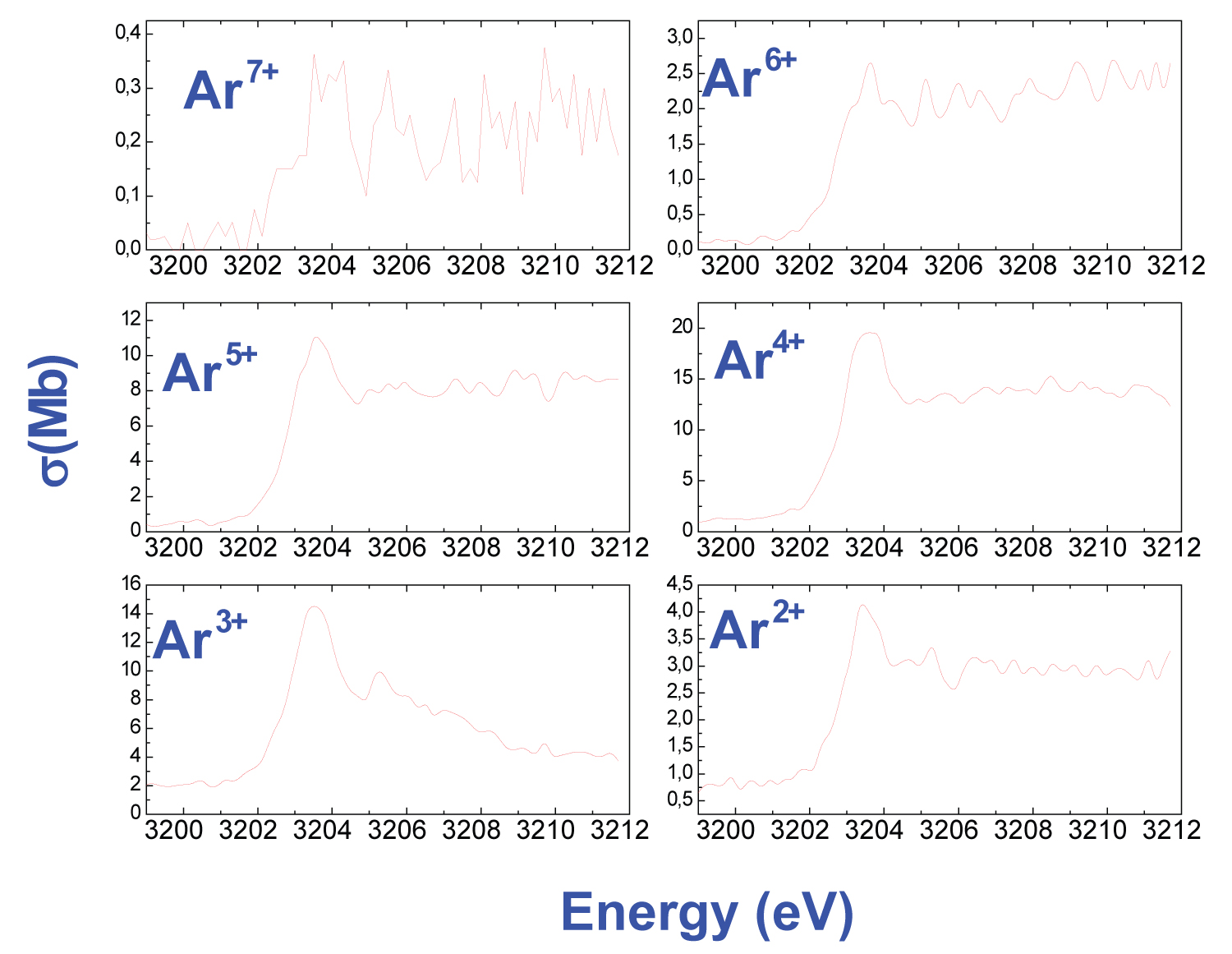
Figure 5: Absolute partial single and multiple photoionization...
Absolute partial single and multiple photoionization cross sections of Ar as a function of the photon energy.
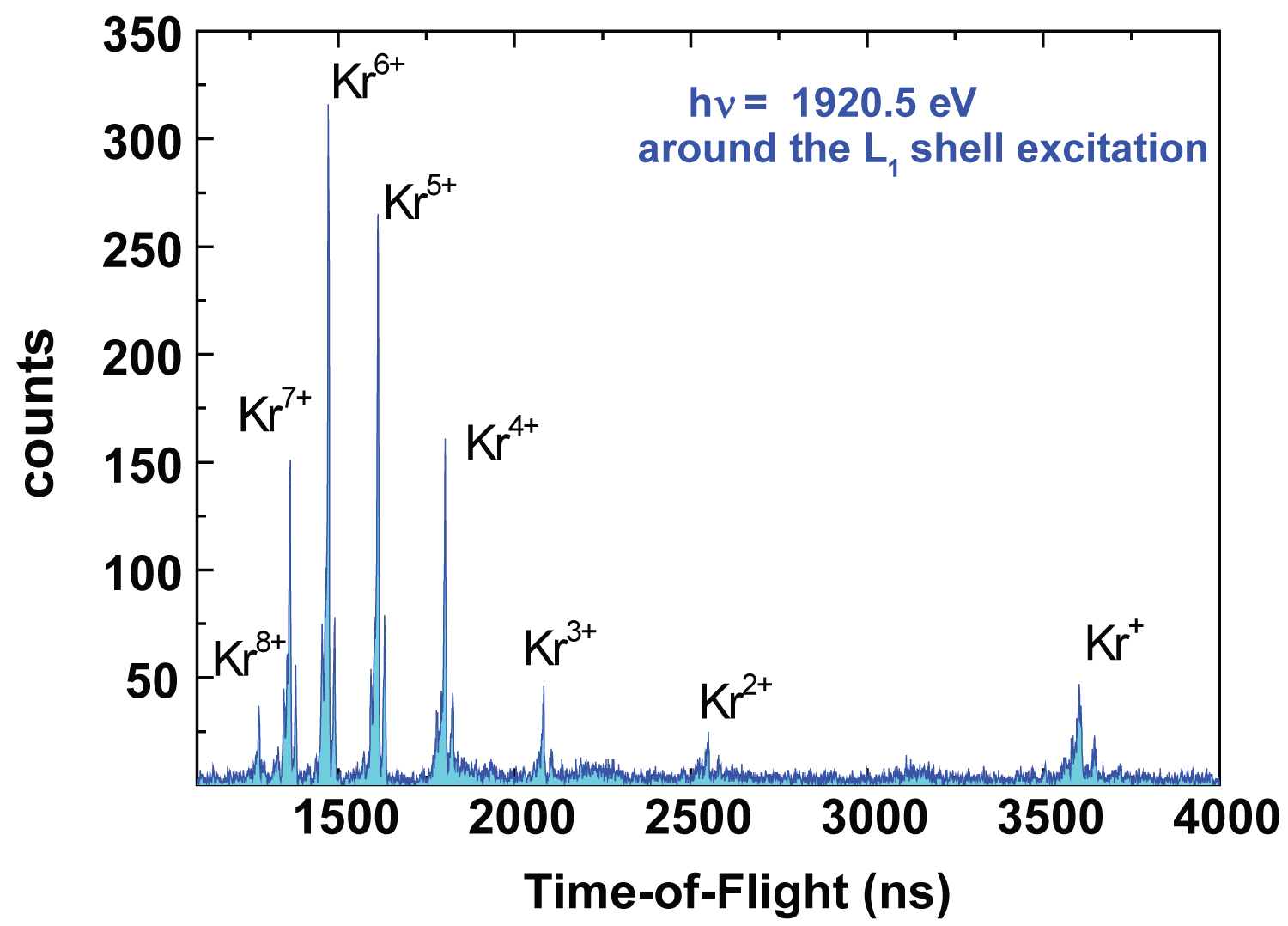
Figure 6: Krypton time-of-flight (PEPICO) spectrum at 1920.5 eV...
Krypton time-of-flight (PEPICO) spectrum at 1920.5 eV corresponding to 2s-1 excitation process. The peak structures are due to the Kr isotopes.
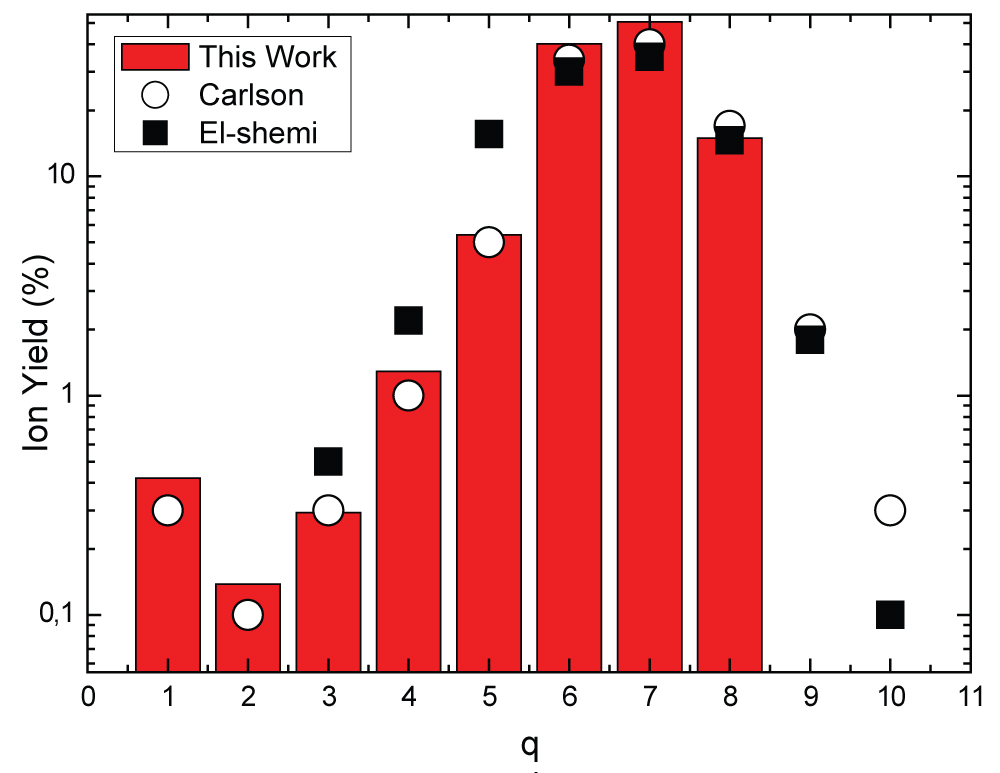
Figure 7: Charge state distributions after creation of the L1-shell...
Charge state distributions after creation of the L1-shell vacancy in Kr. Red bars, E = 1924 eV this work; Squares, theoretical probabilities [2]; Circles, experimental values of Carlson, Hunt and Krause [1] using low resolution photons filtered from an X-ray tube radiation.
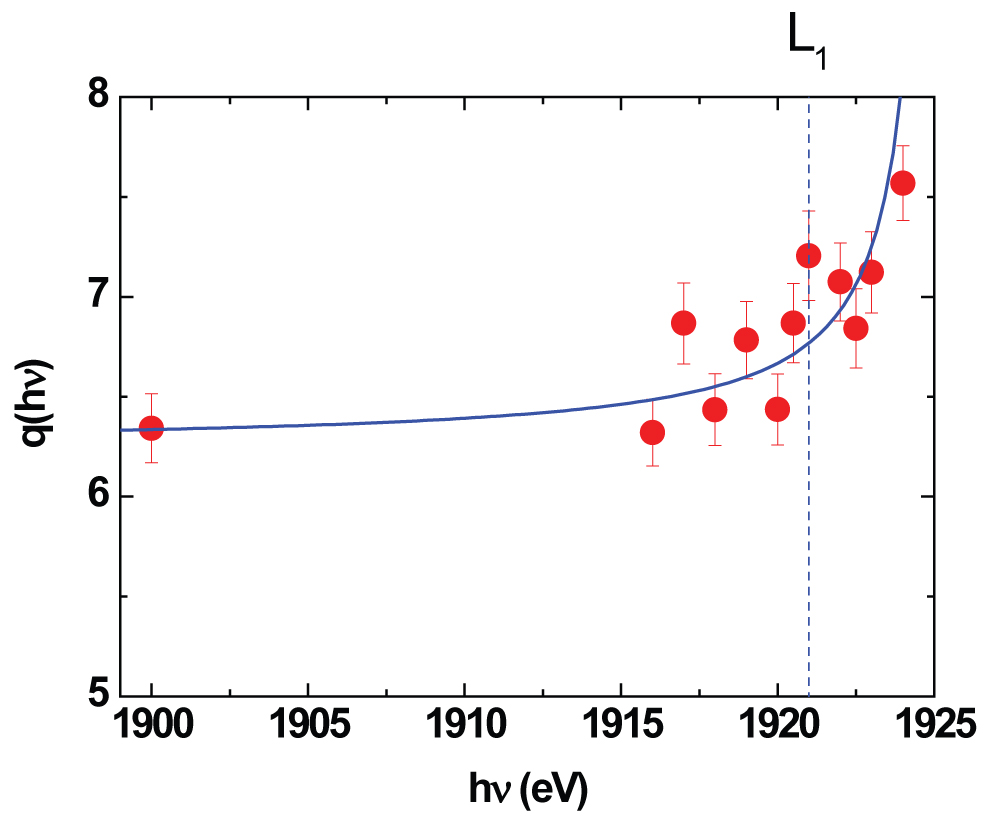
Figure 8: Average charge state of Kr ions near Kr L1edge as...
Average charge state of Kr ions near Kr L1edge as a function of the photon energy. The vertical line indicates the L1edge. Full line: fit from equation 15.
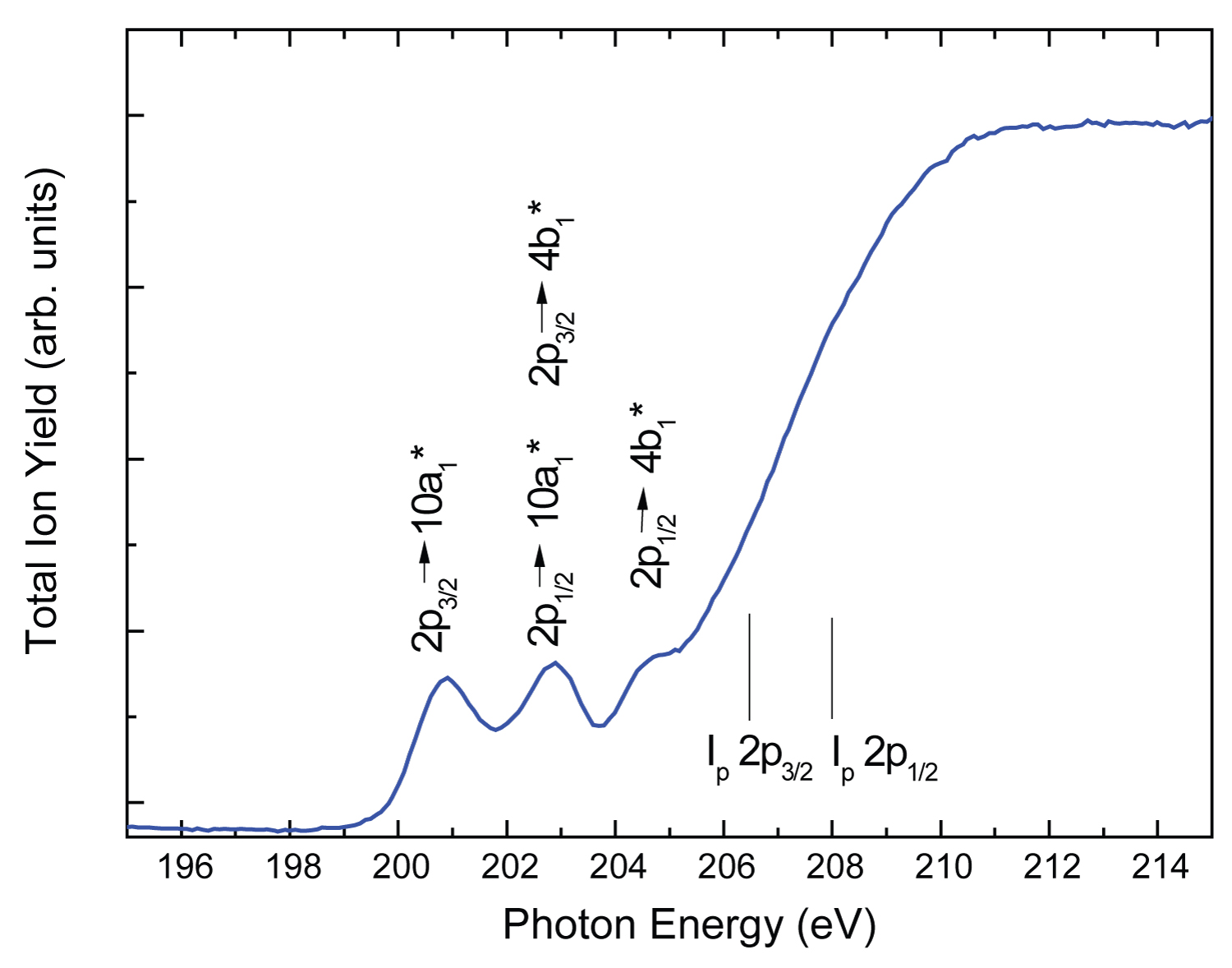
Figure 9: Total ion yield spectra of CH2Cl2around the Cl...
Total ion yield spectra of CH2Cl2around the Cl L2,3-edge.
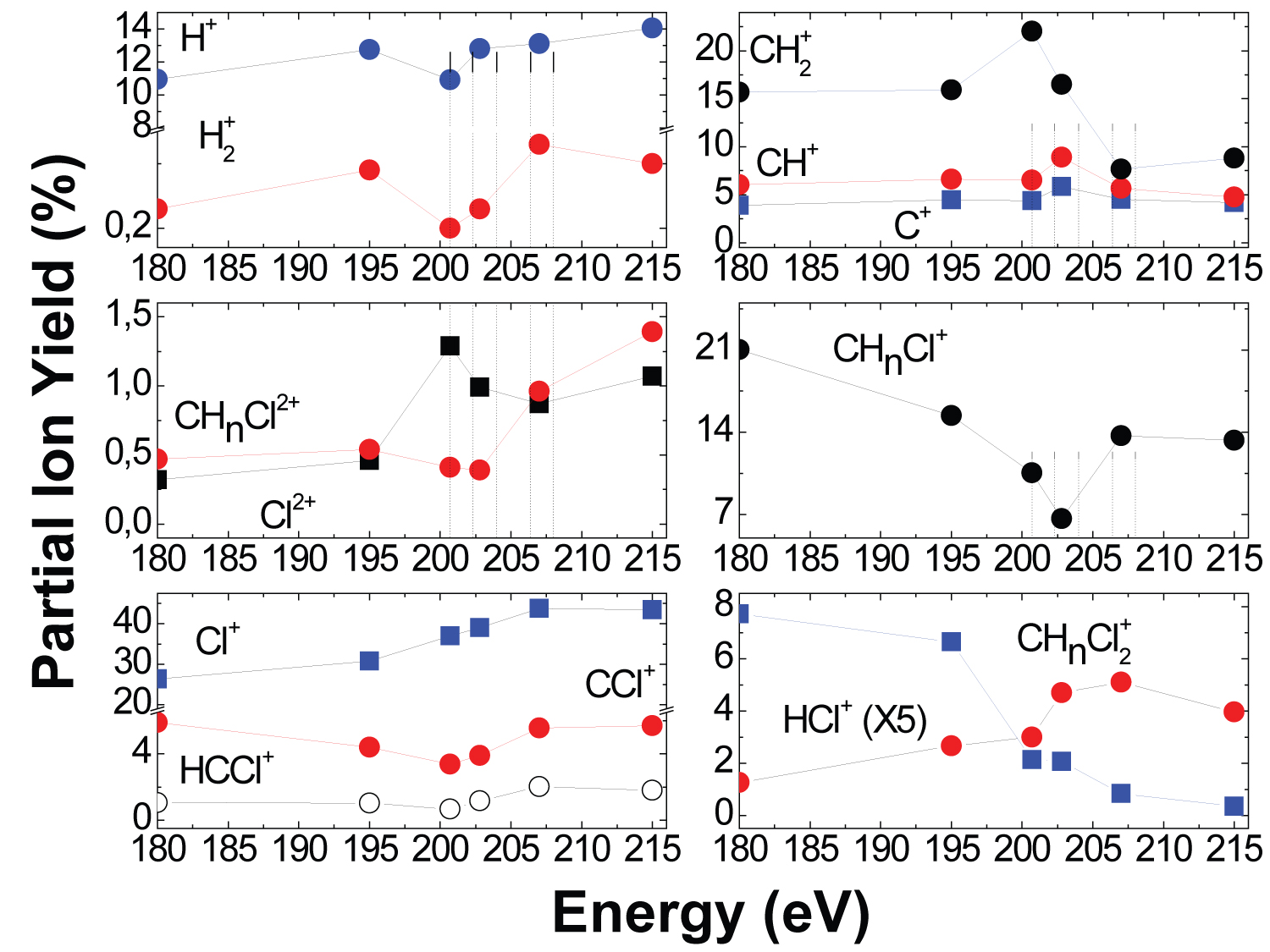
Figure 10: Partial ion yield of selected CH2Cl2fragments...
Partial ion yield of selected CH2Cl2fragments as a function of the photon energy.
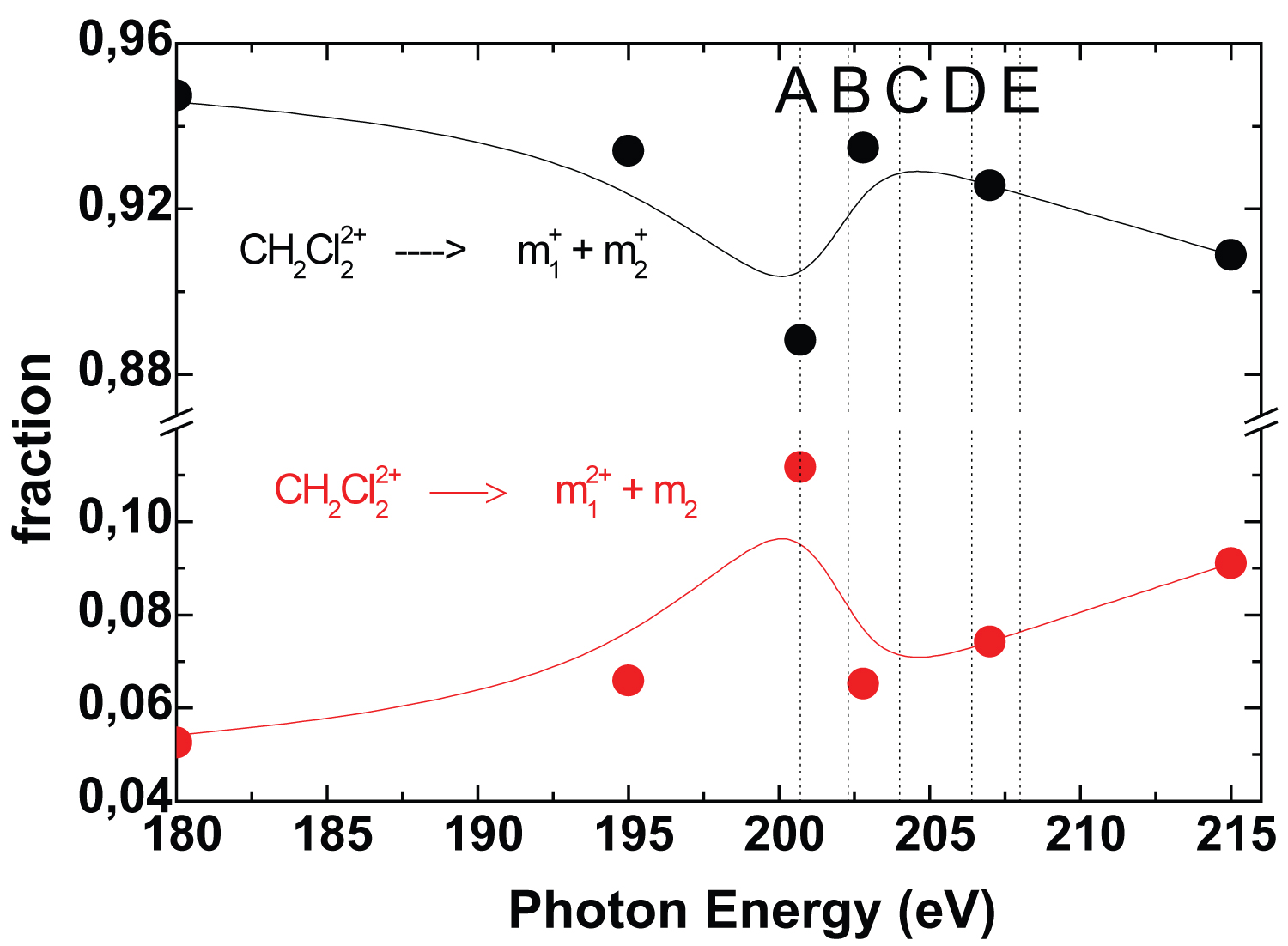
Figure 11: Relative contributions of the symmetric and asymmetric...
Relative contributions of the symmetric and asymmetric molecular fragmentation pathways (see text for details) as a function of the photon energy. In the figure, m1and m2represent fragments of the CH2Cl2molecule.
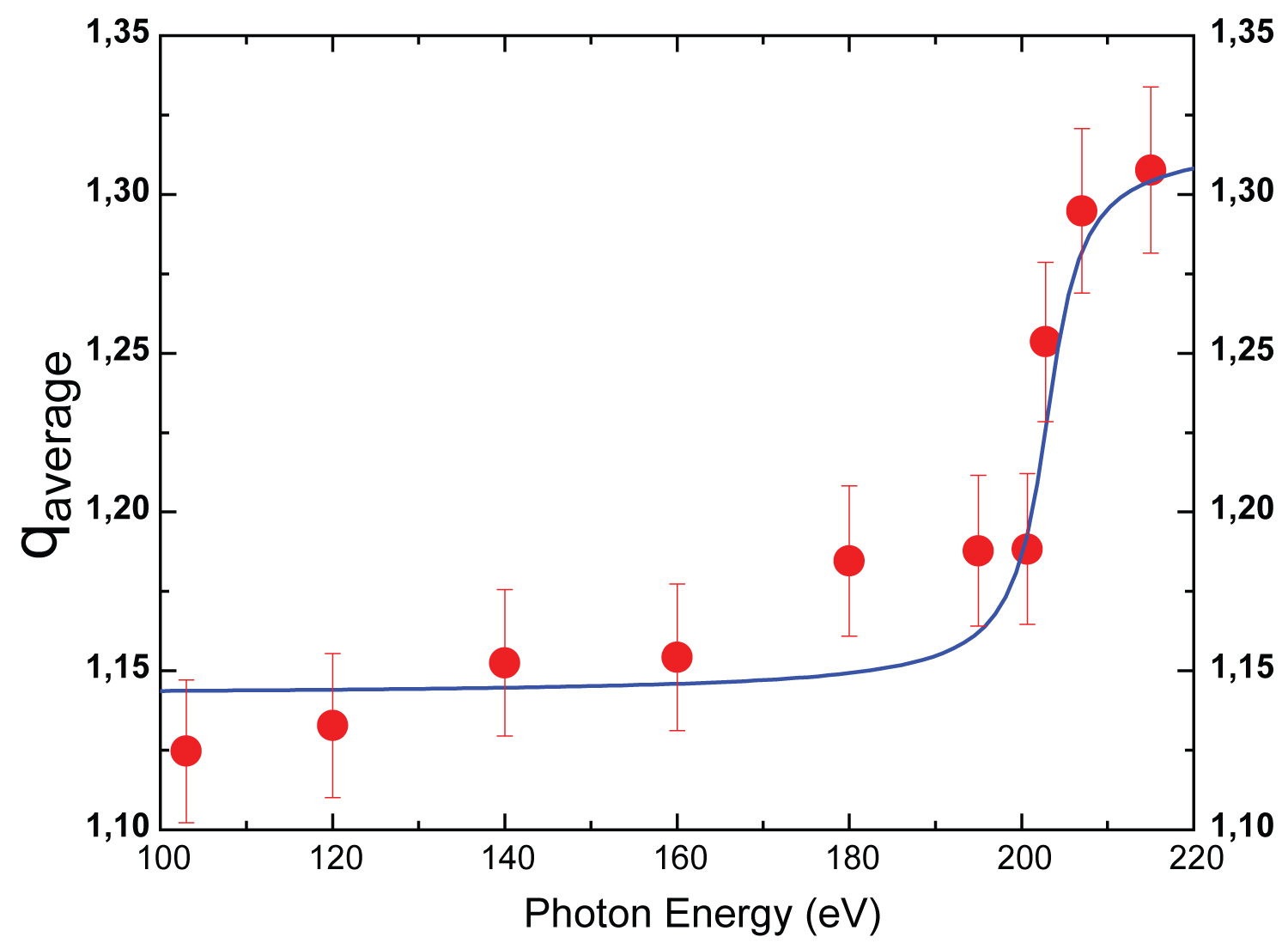
Figure 12: Average charge state of the CH2Cl2molecule...
Average charge state of the CH2Cl2molecule as a function of the photon energy.
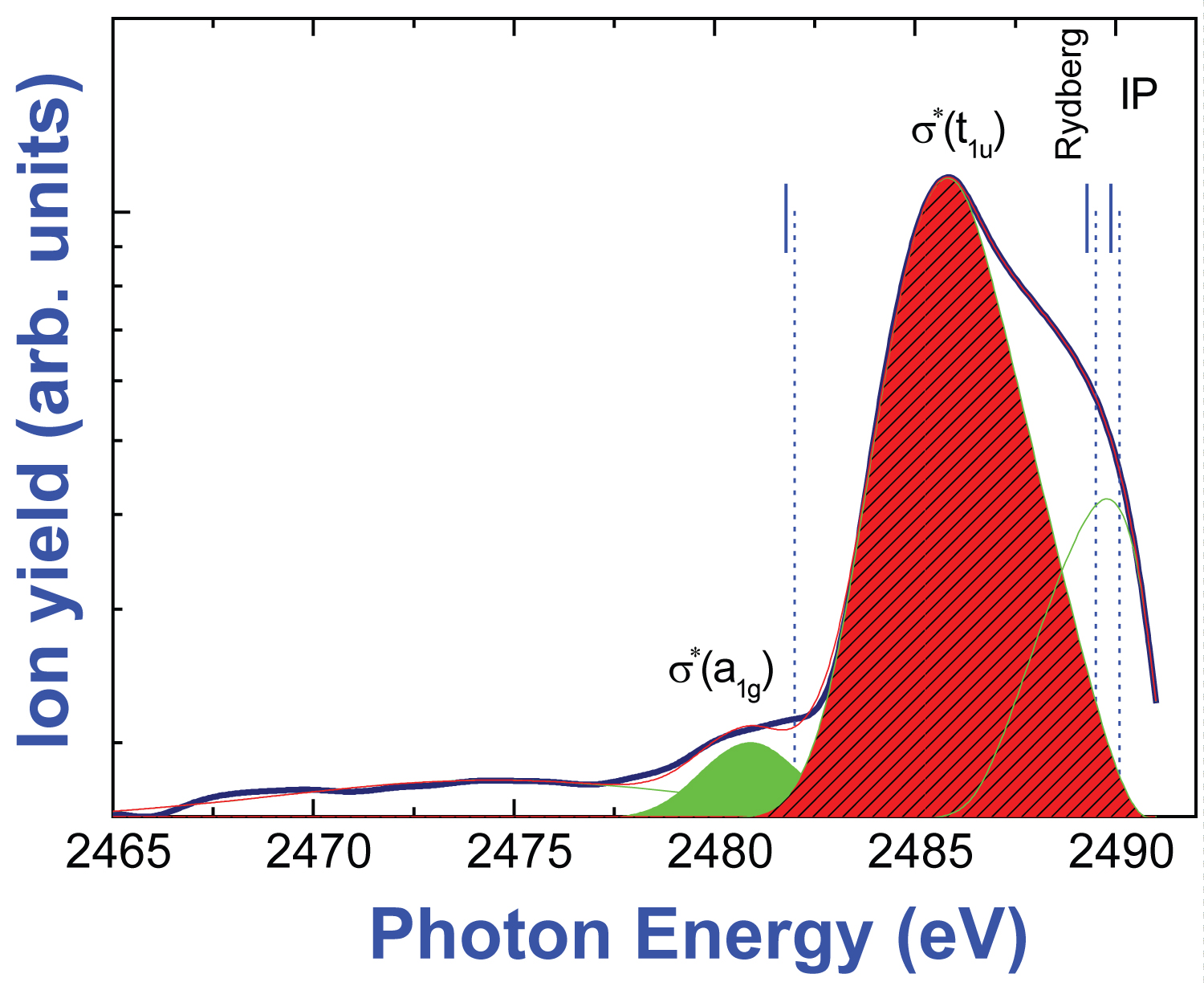
Figure 13: Total ion yield of SF6positive fragments as a function...
Total ion yield of SF6positive fragments as a function of the photon energy in the near S 1s edge region. The vertical axis is in a log scale. The vertical lines indicate the positions of the transitions.
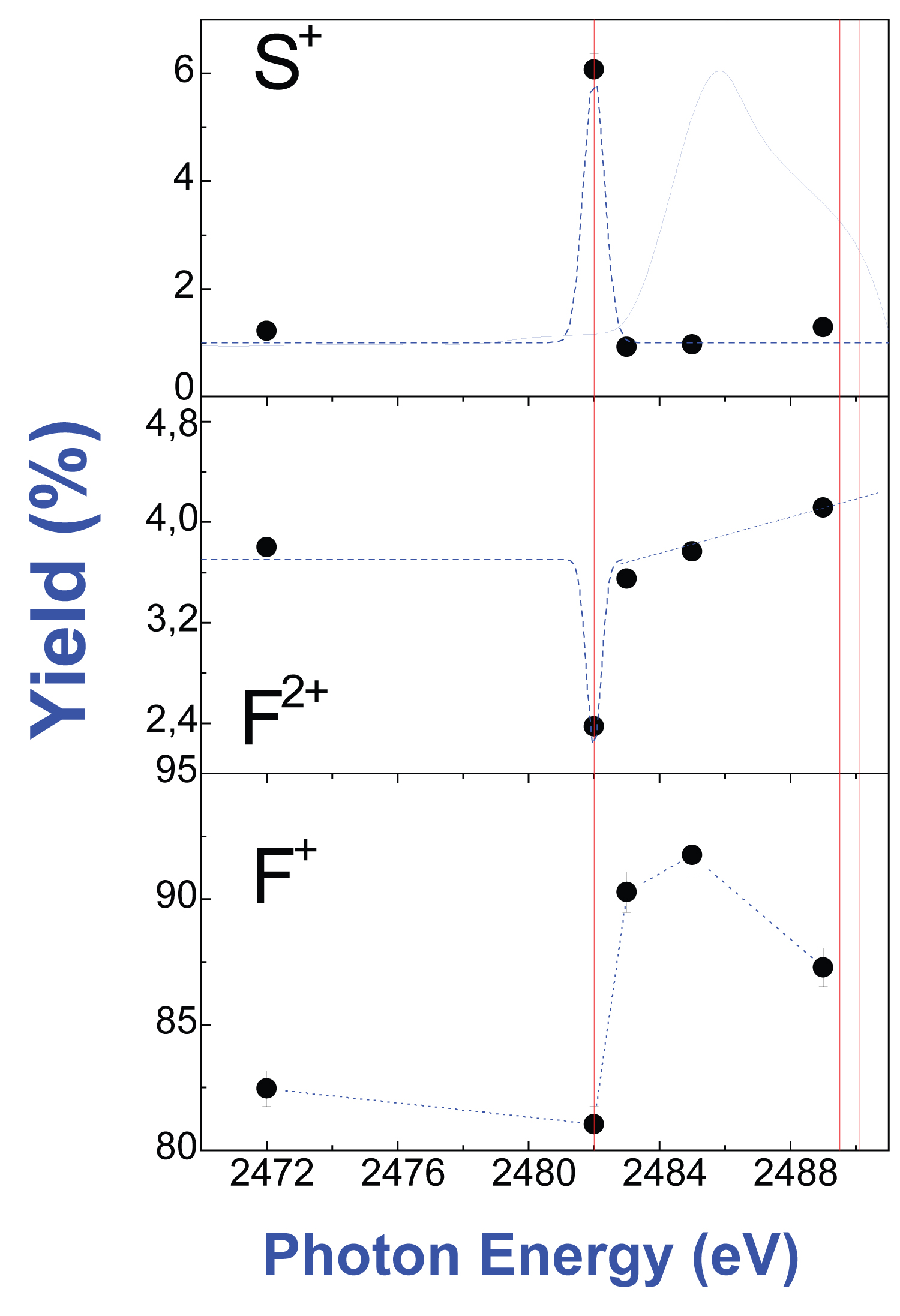
Figure 14: Partial ion yield (%) of some SF6fragments as a...
Partial ion yield (%) of some SF6fragments as a function of the photon energy. For the sake of comparison, the total ion yield is also presented (full line). The vertical lines represent the following transitions: 1a1g→ 6a1gand 1a1g→ 6t1u. Dotted lines are just to guide the eyes. The peak structures at the 6a1gresonance in S+and F2+yields just point out the strong variation in the ion yields of those fragments.
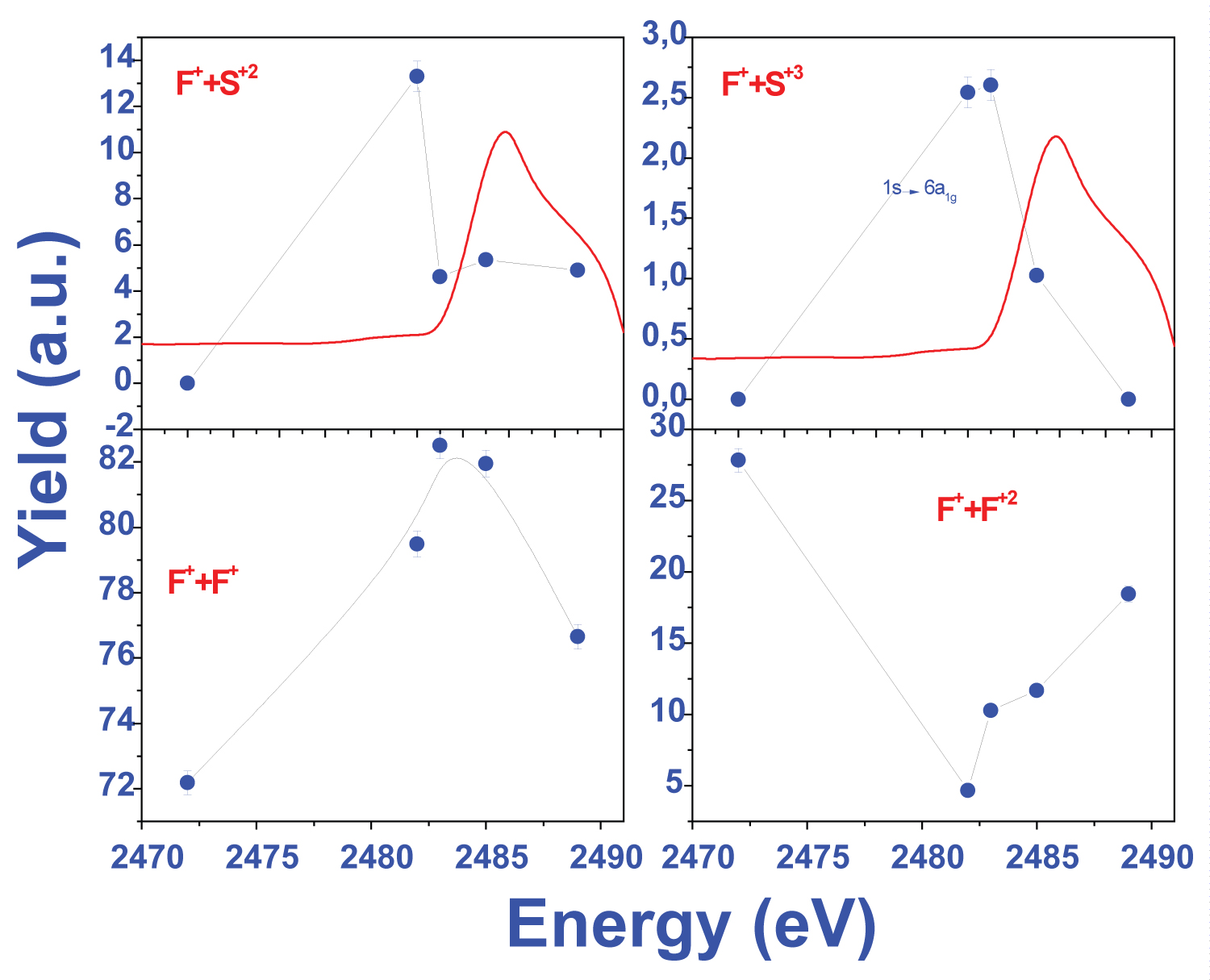
Figure 15: Partial ion yield from the PE2PICO spectra of SF6fragments...
Partial ion yield from the PE2PICO spectra of SF6fragments as a function of the photon energy. For the sake of comparison, the total ion yield is also presented (full red line). The lines connecting the experimental points were drawn to guide the eyes.
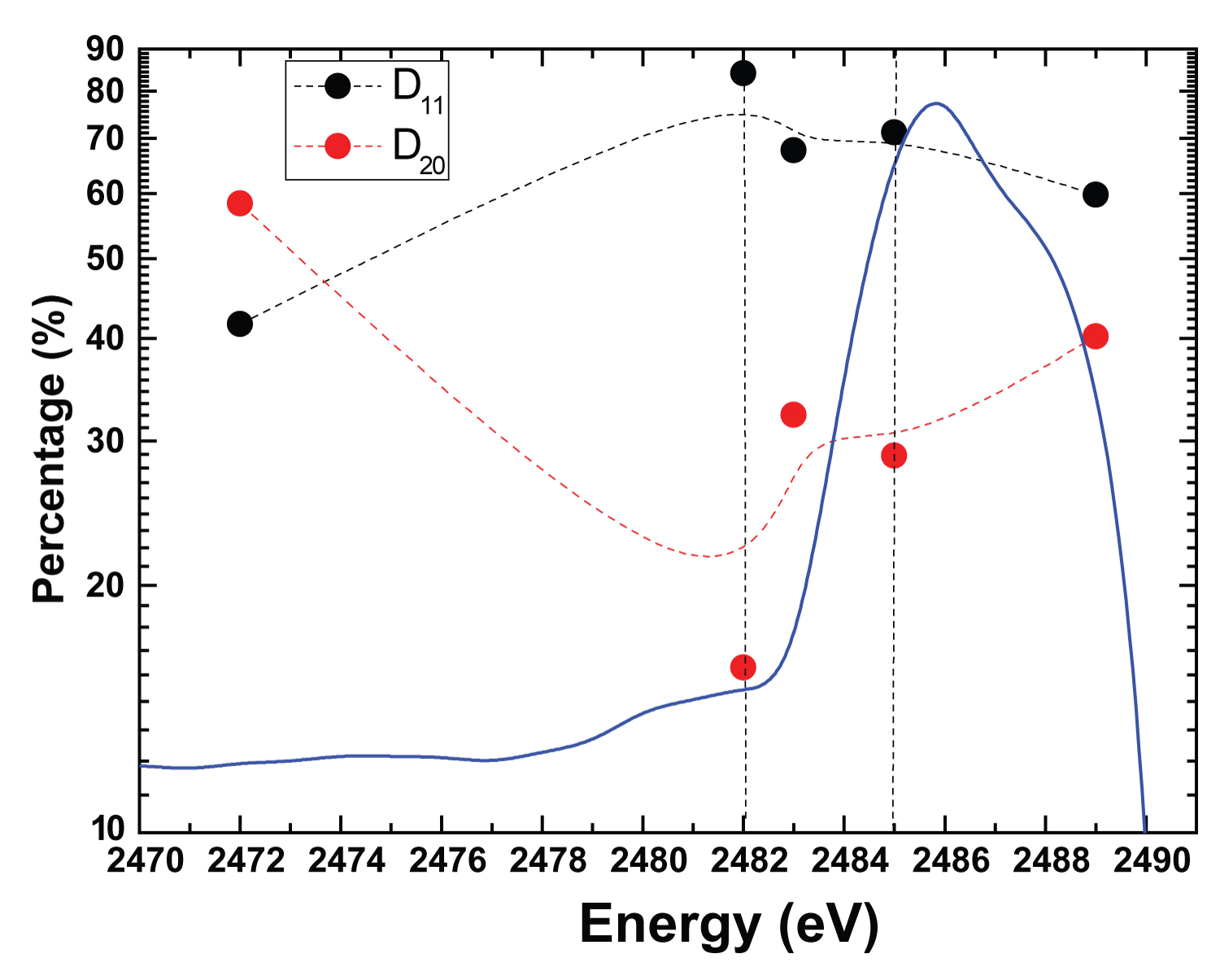
Figure 16: Comparison between the contribution of the molecular...
Comparison between the contribution of the molecular fragmentation pathways D20and D11(see text for details) as a function of the photon energy. The full line represents the total ion yield as a function of the photon energy for comparison purposes.
References
- TA Carlson, WE Hunt, MO Krause (1965) Atomic readjustment to vacancies in the K and L shells of argon. Phys Rev 137: 1655.
- A El-Shemi, Y Lofty, G Zschornack (1997) Ion charge state distributions as a result of reorganization effects in inner-shell ionized atoms. J Phys B At Mol Opt Phys 30: 237-250.
- DP Almeida, ACF Santos, MGP Homem, AN de Brito, GGB de Souza (2007) Multiple photoionization of Ar in the K-edge region: New results. Journal of Electron Spectroscopy and Related Phenomena 155: 109-112.
- C Santos, MG Homem, DP Almeida (2011) Production of highly charged Ne ions by synchrotron radiation. Journal of Electron Spectroscopy and Related Phenomena 184: 38-42.
- Santos ACF, Pilling S, Almeida DP (2015) Charge distribution of Kr ions produced upon photoionization around the 2s edge. Journal of Electron Spectroscopy and Related Phenomena 203: 31-34.
- Alcantara KF, Gomes AHA, Wolff W, Sigaud L, Santos ACF (2015) Strong electronic selectivity in the shallow core excitation of the CH2Cl2molecule. J Phys Chem A 119: 8822-8831.
- Gomes AHA, Oliveira RR, Rocha AB, Wolff W, Alcantara KF, et al. (2015) Strong Selectivity in symmetry forbidden vibronic transitions in deep core ionic photofragmentation of the SF6molecule. International Journal of Mass Spectrometry 388: 9-16.
- Lei Zheng, Mingqi Cui, Yidong Zhao, Kai Chen (2006) Total photoionization cross-sections of Ar and Xe in the energy range of 2.1-6.0 keV. Journal of Electron Spectroscopy and Related Phenomena 152: 143-147.
- M Ya Amusia (1990) Atomic photoeffect. Plenum Press, New York and London.
- Alcantara KF, Rocha AB, Gomes AHA, Wolff W, Sigaud L (2016) Kinetic energy release of the singly and doubly charged methylene chloride molecule: The role of fast dissociation. J Phys Chem A 120: 6728-6737.
Author Details
ACF Santos*
Instituto de Física, Universidade Federal do Rio de Janeiro, Rio de Janeiro, Brazil
Corresponding author
ACF Santos, Instituto de Física, Universidade Federal do Rio de Janeiro, Rio de Janeiro, 21991-972, Brazil.
Accepted: October 23, 2018 | Published Online: October 25, 2018
Citation: Santos ACF (2018) Deep and Shallow Core Excitation and Ionization of Atoms and Molecules. Int J Exp Spectroscopic Tech 3:020.
Copyright: © 2018 Santos ACF. This is an open-access article distributed under the terms of the Creative Commons Attribution License, which permits unrestricted use, distribution, and reproduction in any medium, provided the original author and source are credited.
Abstract
This paper reviews the current status of core excitation and ionization spectroscopy studies of isolated atoms or molecules using synchrotron radiation. Experimental results are discussed for Ne 1s, Ar 1s, Kr 2s, Cl 2p, and S 1s, excitation and ionization. Charge state spectra of free atomic and molecular ions generated after ionization or excitation (by a single photon) of shallow or deep shells are reviewed by using the PEPICO technique. In the case of the atomic systems, the results have been compared and found to be in favorable agreement with available theoretical and experimental values. New results in the atomic inner-shell photoionization are very important in developing and refining many-electron atomic theory. In the case of molecules, the fragmentation of the CH2Cl2 molecule near the Cl 2p edge presents common features with other chlorine containing molecules, which provides key panoramas for understanding the fragmentation of highly chlorinated molecules relevant to stratospheric processes. Finally, in the case of the SF6 molecule, strong selectivity in symmetry forbidden vibronic transitions, which come to light owing to the coupling between electronic and nuclear motions, in deep core ionic photofragmentation is reported around the S 1s edge.
Keywords
Photoionization, PEPICO
Introduction
The photoionization or photoexcitation of free atoms or molecules are fundamental processes in physics and chemistry. The photoeffect is the leading mechanism for creation of charged ions at low photon energies up to some keV. In the context of molecules of atmospheric interest, such as CH2Cl2 and SF6, fragmentation following an inner-shell excitation or ionization, can be an effective way of releasing an halogen atom or ion (Cl in the case of CH2Cl2 or F in the case of SF6). In the realm of the chemistry and physics of the atmospheres, the depletion of the ozone (O3) layer has been linked to reaction with Cl atoms. Reactions between O3 and Cl atoms are very effective at producing ClO and O2. The ClO molecule can further collide with O3 producing atomic chlorine, leading to a cycle where ozone is destroyed into O2but no Cl atom is consumed. On the other hand, SF6 is the most efficient greenhouse gas, with a global warming potential, GWP, 23900 times larger than that of CO2. Its atmospheric lifetime is about 3200 years, due to the fact that SF6 is inert in the troposphere and stratosphere.
The ionization of two or more target electrons is only achievable through electron-electron correlations. Thus, the study of the interactions of EUV and X-ray photons allows to achieve comprehension on the coupling among the initial and final target states. When a high-energy X-rays pass through matter, their energy is dispersed through interactions with the species of the medium. The number of primary and secondary ion pairs produced per unit length of the particle's path, i.e., the specific ionization, of X-rays is just a tiny fraction of the corresponding specific ionization of a projectile electron of the same energy. The core-hole creation after inner-shell excitation or ionization in an atomic or molecular species is followed by subsequent radiative, i.e., photon emissions due to the shift of the vacancy to outer shells, and/or non-radiative decay (Auger or Coster-Kronig processes). The Coster-Kronig transition is a special case of the Auger process in which the vacancy is filled by an electron from a higher subshell of the same shell. The photoionization of free atoms or molecules can take place directly
Where ħ ≅ 1.054 × 10-34J.s, is the Planck constant, ω is the angular frequency of the ionizing photon, A stands for an free atom or molecule, and e- stands for the photoelectron. Photoionization can also occur indirectly, through intermediate neutral states,
The kinetic energy of the photoelectron, Ke-, is related to the incoming photon energy, ħω, via energy conservation:
Where IP is the ionization potential of the atomic or molecular species. In equation (3), it is implicit that the ratio between the photoelectron mass and the recoil ion mass is very small (me/mA ≅ 0). Thus, the recoil energy of the recoil ion can be ignored.
When a penetrating photon is absorbed by a free atom or molecule, it may lead to a excitation or ionization of a core electron. The portrayal of such inner-shell excitation or ionization processes in the case of an free atom or molecule A interacting with a high-energy photon of energy ħω or ħωres, where ω and ωres are the nonresonant or the resonant X-ray photon angular frequencies, is described as:
In equation (5), V represents an unoccupied molecular valence state, A+ stands for the core ionized atomic or molecular ion. The photoabsorption cross sections in the core excitation regions are usually described with the following expressions. The core excitations (CE) cross sections are represented by a Lorentzian function
Where i labels the resonances, ħω is the photon energy, Ei is resonant energy, and Γi is the natural broadening (FWHM) which is a universal characteristic of all quantum systems which is directly related to the lifetime width, τ, which can be written in this case as
The factor Γi/2 in Eq. (6), is the frequency width δω, associated with the transition. A finite width arises because the transition takes a time τ ~ ħ/Γi to take place. Equation (7) is sometimes referred as the spectroscopist version of the Heisenberg's principle of energy-time uncertainty. That said, in spectroscopy it is usual to identify τ as the average lifetime of an excited state which depends on energy width of that state. In fact, τ should be written as , where t is the lifetime of the system, and
If the monochromator bandwidth ΔE is larger than the natural linewidth, the peaks will have a Gaussian lineshape given by:
Where is the variance, and σCE is the transition cross section. In most cases, electronic decay takes place before molecular dissociation, which takes place in 1 fs ≤ τ ≤ 102fs range. For a low Z element and an inner-shell excitation, a resonant Auger (autoionization) process takes place, where a first valence electron (from the valence-shell V) will be ionized with a kinetic energy, KAuger, which depends on the quantum state of the remaining singly charged ion. When the inner-shell excited electron takes part in the decay process (participator resonant Auger decay), the decay outlined above can be represented as:
Where Ei(V-1) is the sum of the electronic, vibrational and rotational energies of the A+ion with a vacancy in the valence state V'. The core ionization (CI) cross section is represented by
Where Ecore is the ionization potential of the core electron. As for inner-shell ionization, in the case of a low Z element, the highly excited singly charged ion A+(core-1) will most probably decay by the normal Auger decay, which is a two- or more electron process: Initially, an electron from an valence shell V1 fills the inner-shell vacancy while a second electron (the Auger electron) from another outer shell V2 is ionized. The final product is a doubly charged ion, A++, produced after the Auger decay:
The Auger electron is ejected carrying a kinetic energy, KAuger, which is independent of the energy of the incoming radiation ħω but depends on the electronic structure of the target:
Where Ei(V1-1V2-1) is the sum of the electronic, vibrational, and rotational energies of the A++ion with two vacancies in the valence shells V1and V2. The direct ionization cross section σdir is considered constant in the photon energy interval near the resonances.
From the experimental point of view, measuring ionization or fragmentation is always a genuine challenge. Since the papers of Carlson and Krause [1], several works have been published in order to obtain accurate data, mainly for rare atoms [2]. Overall, valuable information on the production of multiply charged ions has been obtained in the last decades. As a result, a much deeper understanding of the multiple ionization process is currently available. Such information may be needed for many fundamental applications in different technological and scientific areas. In this paper, we review on experiments on the production of multiply charged ions created in direct ionization or vacancy cascades subsequent to the production of single inner-shell (shallow or deep) vacancy in isolated atoms [3-5] or molecules [6,7] from the Laboratório Nacional de Luz Síncrotron (LNLS). In sec. II the experiments are described, in sec. III the results are presented.
Experiments
In order to obtain experimental information on the molecular photofragmentation as a function of the photon energy, from valence to deep core levels, experiments were performed at the Laboratório Nacional de Luz Síncrotron (LNLS) located in Campinas, São Paulo, Brazil. The radiation of white ligh t that emerges of the ring has a wide spectrum of wavelengths and it passes through a monochromator depending on the photon energy range. There are twelve beam lines in the LNLS, each based on a different monochromator, that allows select different wavelength ranges and equipped with experimental setups dedicated to specific applications and experimental studies. The molecular fragmentation studies were performed at two different beamlines: the TGM (Toroidal Grating Monochromator) and SXS (Soft X-ray Spectroscopy).
The TGM line is designed to provide photons in the vacuum ultraviolet and soft x-ray range, from 12eV to 330 eV. The beamline is equipped with several shutters acting as safety devices, collimator slits defining the beam size, toroidal grating monochromators, a condenser mirror, a gas harmonic attenuator (neon filter), capillary system, a refocused mirror, and the experimental chamber setup. The three interchangeable toroidal diffraction gratings allow select the required energy range, deliver a photon flux of around 1013Hz (1,3 GeV - 100 mA), present an energy resolution of Δλ ≤ 0.1 Å (40-120 Å), Δλ ≤ 0.3 Å (120-360 Å), and Δλ ≤ 1.1 Å (360-1000 Å), for the three gratings respectively, and have a spectral resolution of E/∆E better that 500. The SXS beam line is designed for Soft X-ray Spectroscopy (790 - 4000 eV) and features two monochromators with double crystals, totaling four crystals, and defining four energy ranges of interest: beryl, 790 eV - 1550 eV; quartzo, 1480 eV - 1800 eV; InSb, 1680 eV - 4000 eV; Si, 2050 eV - 4000 eV. This beam line has a spectral resolution of ΔE = 0.4 (0.8) eV at E = 800 eV (4000) eV, respectively.
The TGM beamline permits selecting the light polarization degree can be selected from linear to almost circular. A mirror-inserted harmonic attenuator and calibrating-device with a long length was developed and inserted at the beamline. It is well known that diffraction gratings stand the inconvenience of high harmonics production to some degree. It consists of integer multiples of higher order of the energy selected in monochromator, which can have enough intensity to mask the spectra. The attenuator allows for efficiently inhibit high harmonics from 25% to 1 ppm in a grazing incidence bending magnet beamline. It is based on the absorption of the high energy photons in a gas phase region, allowing negligible high harmonics production for photon energies ranging from 12 eV to the gas first ionization threshold, 21.6 eV (for Neon). It comprises a column of neon one meter long subjected to a pressure of 0.1 Torr. The neon gas was chosen because it absorpts in 21.50 eV, cutting harmonics upper to 12 eV, that is the lower limit of monochromator. The column is connected to capillary systems what allow a differential pumping in order to avoid contamination of the beamline and ring, which works in a pressure between 10-9and 10-11Torr. Likewise, the chamber of samples which the work pressure is between 10-5and 10-6Torr also is kept in differential pumping.
Despite of the beam line or photon energy range of interest, the experiment can be described briefly as follows: monochromatized synchrotron radiation delivered by one of the beamlines (TGM, or SXS beam line), operating with 20-250 μm slits adjusted depending on the photon flux, intersect an effusive gas jet in a high vacuum chamber, with base pressure in the 10-8Torr range. The chamber pressure is raised and maintained below 10-5Torr, when target gas is injected through a needle into the chamber. The emergent light beam is recorded by a light sensitive diode. The detection system, housed in the experimental chamber, is composed by light sensitive diode for measuring the emergent light beam current and a time-of-flight mass spectrometer for collecting the electrons and fragment ions resulting from the collision.
The time-of-flight mass spectrometry (TOF) is a widely used technique in molecular photo-fragmentation, see Figure 1. The method, as will be described next, known as PEPICO, Photo-Electron-Photo-Ion Coincidence technique allows a very complete analysis of the fragmentation process, giving information about the fragmentation pathway, pattern, abundances, and dynamics of the photoionization. The fragments identification through the TOF is doing by the measurement of the charge/mass ratio. After the single or multiple ionization and fragmentation of the molecule induced by the photon, the positively ionized molecule or-fragment ions and the photoelectrons are extracted into opposite directions by a high electric field. The ejected electron collected by two micro-channel plates (MCPs) in chevron configuration, starts a time-to-digital converter (TDC), while, on the other side, cations, drift in a field free region through the time-of-flight tube, are detected by MCPs, and stops the TDC.
The fragment ions produced by the interaction with the linearly polarized light beam, are accelerated by a two-stage electric field (750 V/cm extraction field). The TOF was designed to have a maximized efficiency for ions with energies up to 30 eV. The high voltage (-4250 V) applied on the front of a MCP detector assures mass and charge state independence of the ion efficiencies. The spectrometer includes ion and electron lenses to permit the use of comparatively little active area microchannel plate (MCP) detectors. Ions and electrons can be detected without angular discrimination with a maximum kinetic energy at least two times higher than without the lens actions. The rotary experimental chamber permits the spectrometer axis to be placed at several angles relative to the polarization vector of the incident photon beam. The coincidence experiments were performed with the TOF axis oriented linearly relative to the plane of polarization of the synchrotron light. The acquisition setup allows a multi-hit potentiality with 1 ns resolution. Coincidence measurements can be performed on polyatomic molecules containing two or more atoms of equal mass. For a given photoionization event, the system can detect, within a time window of 5.0 μs (a time longer than the time of flight of the heaviest fragment), the cations as a function of their mass-to-charge ratio. At present, we are able to detect the arrival of three correlated fragment ions. The acquisition system combined with a multidimensional data analysis program generates simultaneously three spectra: One-dimensional time of flight spectra for simple correlation between one electron and one ion (PEPICO); Two-dimensional spectra for double correlations between one electron and two fragment ions (PEPIPICO); Three-dimensional spectra for triple correlation between one electron and three ions (PE3PICO).
Results and Discussions
Atoms
Neon
Charge state spectra of Ne ions generated by photoionization from 2 to 3.3 keV X-ray with Ne atoms have been measured by the PEPICO technique. Relative abundances of Neq+ions in charge state up 5+ were obtained. A comparison with other experimental and theoretical data is presented. In addition, by combining the present data with various theoretical and experimental data, we have shown that double ionization of Ne atoms by fast electron impact occurs mainly via outer-shell ionization.
Relative yields for single and multiple ionization of Ne atoms were determined. A typical PEPICO spectrum is shown in Figure 2. The charge state distributions are not sensitive to the x-ray energy.
The relative intensities Iq+ for production of Neq+ions are related to the partial cross-sections for multiple photoionization σhνq+ by
Where Ihν is the incident photon beam intensity, n(P) the target density which is a function of the target pressure P, and εq+ is the product of the efficiency for detecting a given ion of charge state q by the efficiency for detecting at least one of the q electrons. From Eq.(14), one finds
Where σhν+ is the single ionization cross section. In the present work, the relative detection efficiencies, εq+/ε+, were obtained following the procedure of our previous work [3-5], where the ratios of the detection efficiencies, were determined for argon ions as a function of the ion charge state q. In the present experimental work, the main source of uncertainties come from the determination of the relative detection efficiencies (~5%) and the counting statistics of the ion intensities (~1% - 10%).
From the PEPICO spectra, the partial ion yields of Ne, i.g, the fractions of photoionization cross sections, can be obtained by integration of the corresponding peaks and normalization of the net areas to the total number of events, Eq. 14 The partial ion yield of ions in charge state q, PIYq+is given by
Where
is the differential dipole oscillator strength for an ionization transition, where σhvq+(E) is the q+ photo-ionization cross section.
Figure 3 shows the dependence of the relative ion yield of Ne ions on the X-ray energy. In the present energy range, the relative fractions exhibit a weak dependence on the photon energy. For instance, the yield of singly ionized Ne ions increases from 6.7% at 2200 eV to 12% at 3200 eV. This fact can be understood as follows: the partial photoionization cross sections for 1s, 2s, 2p in Ne decrease with the increase of the photon energy above 1 keV. The partial photoionization cross section of Ne 2s is larger than that of Ne 2p above around 1 keV. The decreasing slope for the partial photoionization cross section of Ne 1s against the photon energy is larger than that of Ne 2p, which yields that the branching ratio of singly charged Ne+increases with the increase of the photon energy.
Argon
Single and multiple photoionization branching ratios of Ar have been measured for photon energies around the K edge region between 3198 and 3212 eV using synchrotron radiation and time-of-flight mass spectrometry. The present data is normalized to the absolute values using the accurately measured data of Zheng, et al. [8]. A comparison with other experimental and theoretical data is presented and discrepancies are discussed. Figure 4 shows a typical PEPICO spectrum of argon.
The partial ion yield as a function of the photon energy is shown in Figure 5. Following K shell ionization, the singly charged Ar+ion can only be formed by filling the 1s hole by a valence electron. The summed contribution from the Ar+and Ar2+ions amounts to approximately 12% of the total ionic yield at 3210 eV and above. The yields for most ions show a maximum at the 1s → 4p excitation following the shape of the total cross sections. The exception is the yields for the production of Ar3+which presents a monotonically decrease above the K edge. The cross sections for Ar6+exhibits a gradual increase above the 1s → 4p resonance. The yields for Ar7+, on the other hand, does not present the maximum at 1s → 4p resonance, and remains virtually constant above the K edge. The cross sections for Ar8+exhibits the same behavior than the Ar7+, remaining constant above the 1s → 4p resonance.
Krypton
A typical raw PEPICO spectrum is shown in Figure 6. The decay time of the core excited hole is given approximately by τ ~ ħ/Γ, where Γ = 215 meV is the Kr 2s lifetime broadening τ ~ 3 fs [5].
From the PEPICO spectra, the partial ion yield of Kr ions can be obtained by integration of the corresponding peaks and normalization of the net areas to the total number of events. The relative fractions PIYq+of ions (partial ion yield) in charge state i is given by Eq. 15.
Figure 7 shows the present Kr charge state distributions after L1-shell vacancy. The spectra are very broad, presenting a minimum at q = 2 and a maximum at q = 7. This very specific behavior of the charge state distributions are ascribed to the fact that the emission of electrons during de-excitation are accompanied by shift of energy levels inducing opening or closing new Coster-Kronigs channels. In addition, for larger target atomic number, the occupation number changes from shell to shell, opening or closing new Coster-Kronig channels [5].
Figure 8 shows the average ion charge qave of the Kr, calculated by weighting the partial ion yields with its charge state for the Kr ions around the L1 edge as a function of the photon energy. By comparing the present results with previous results for Ne and Ar [3-5], one observes that the average charge state after de-excitation of inner-shell holes becomes larger with the increase of atomic number. This can be understood in terms of the increasing complexity of the atomic structure and the increasing number of available non-radiative transitions. The most striking feature of Figure 8 is that the average charge shows a quick rise with photon energy, exhibiting a distinct difference below and above the L1 edge. Amusia [9] derived a formula for the mean ion charge variation in the vicinity of a threshold:
Where and , σ2s is the photoionization cross section of the 2s shell, and σ2p is the photoionization cross section of the 2p. In equation (18), q- is the mean charge state well below the 2s threshold, Δq = q+- q-, and q+ is the mean charge state well above the 2s threshold. The results of calculations using equation (18) and the experimental data are shown in Figure 7, demonstrating suitable agreement. The following parameters were used: Ii = 1923 eV, q- = 6.25, Γi = 215 meV, β = 20.
Molecules
Shallow core
The shallow-core is defined as a state in which a core hole can decay electronically only through interactions with valence-shell electrons (e.g. Cl 2p). In order to study the fragmentation processes following inner-shell excitation and ionization, the total ion yield (TIY) spectrum of the CH2Cl2 molecule was obtained around the Cl 2p edge (Figure 9). The doublet structures with energies 200.7 eV and 202.3 eV in the TIY spectrum, are due to the spin-orbital splitting of the 2p3/2 and 2p1/2 levels of chlorine. The peak at 200.9 eV is attributed to a transition from a Cl (2p3/2 → 10a1*) [6]. The peak at 202 eV is a structure assigned to Cl (2p1/2 → 10a1*) and (2p3/2→ 4b1*- 202.8 eV) transitions. The peak at 204 eV is allotted to a (2p1/2 → 4b1*) transition. There are two ionization limits due to the spin-orbit splitting of the 2p hole, Cl 2p3/2,1/2 → ∞ (IP), indicated by the vertical lines at 206.4 eV and 208 eV [6].
The photoion branching ratios are presented in Figure 10 as a function of the photon energy. For direct valence ionization, the CHnCl+(n = 0,1,2) ion is the most intense fragment, followed by the Cl+and CH2+fragments. In the vicinity of the chlorine 2p edge, the intensities of the H+and CHnCl+ions compete and are the most intense fragments after the Cl+. However, at 207 eV, close to the Cl 2p3/2,1/2 → ∞ transition, the yield of the CHnCl+ fragment presents a minimum.
Unstable multiply charged molecular ions are produced due to electron correlation. Because of the Coulomb repulsion between positively - charged, subsequently - produced fragments, the molecule dissociates in a very sudden way. Several fragmentation processes in the core-excited CH2Cl2 molecule, lead to fragmentation into smaller pieces due to the double and triple ionization events originated from a cascade of successive fragmentations, as described by
CH2Cl22+→ m1++ m2++ neutrals (19)
CH2Cl23+→ m1++ m2++ neutrals (20)
Where m1 and m2 are fragments of the CH2Cl2 molecule.
Aiming to determine the fractions of the "Coulomb" and chemical forces in the fragmentation of the dication CH2Cl22+, we adopt the analysis described previously33. Let D20 represent the number of doubly charged ions constituted by the sum of all non-symmetric dissociation m2+→ m12++ m2 channels, and D11 the number of dissociative double ionization processes corresponding to the sum of all charge separation processes m2+→ m1++ m2+. The fractions for both channels are given respectively as [6,7].
and
Where fi = 0.29 is the efficiency for detecting an ion34and D11meas and D20measare the raw numbers for m2+→ m1++ m2+and m2+→ m12++ m2, dissociation channels, respectively. Figure 11 shows that in the energy range studied in this work there is a strong dominance (~94%) of the symmetric (A++ B+) dissociative double ionization for the coincidences presented in Figure 10. The most striking result is the enhancement of the asymmetric (A2++ B) fragmentation at the Cl (2p3/2→ 10a1*) resonance, mainly due to the increasing contribution of the Cl2+dication.
Figure 12 shows the average recoil ion charge qave of the CH2Cl2 molecule ions from valence to the Cl 2p edge, calculated by weighted average, where the weight assigned to the total ion yield is equal to the recoil ion charge for q up to 3 from the PEnPICo spectra (n = 1, 2 and 3).
The most striking feature in Figure 11 is that, as the Cl 2p edge is reached, it leads to a substantial gain of the relative yields of charge states q = 2 and q = 3, and consequently qave. As fractional yields are presented, charge states q = 1 display a similar relative reduction. This is due to the fact that as the core electron suffers a resonant excitation, the molecule is brought up to a rather unstable potential energy surface. The system then decays prioritarily by ejecting one or several electrons. Therefore, the average total charge shows a quick rise with photon energy from the resonance up to the IP.
Deep core
photoionization of the sulfur hexafluoride molecule was studied with X-ray photons at energies around the S K edge (from 2472 eV to 2489 eV). Total and partial photoion yields for the fragments have been recorded as a function of the incident photon energy. The atomic fluorine ion, F+is the most abundant species observed in the mass spectra at the energy range studied. The SF6molecule undergoes a complete break up with the formation of atomic doubly and triply charged S2+, S3+, and F2+fragments.
The total ion yield of the SF6 molecule is shown in Figure 13. The spectrum of the SF6 presents resonances around the sulfur 1s edge superposed to the background due to absorption by fluorine atoms as indicated in Figure 13. The incident photon-energy calibration was accomplished by scanning the monochromator through the S 1s threshold region and monitoring the total photoion production. From Figure 13, a discrete absorption feature is observed at 2482 eV and assigned to a dipole-forbidden transition of the S 1s electron to the unoccupied antibonding 6a1g valence MO and the S 1s→6t1u resonance at 2486 eV [8]. Core excitation to Rydberg orbitals are also identified at 2489.5 eV [8]. The rightmost vertical line (2490 eV) corresponds to the ionization potential, S 1s→ ¥ (IP) [8].
In order to study the fragmentation processes following inner-shell excitation and ionization, mass spectra were obtained at selected photon energies ranging from 2472 eV to 2489 eV, around the S 1s edge. Figure 13 shows the partial ion yield of the SF6 fragments as a function of the photon energy. Above the S 1s edge, one can observe the increasing in the production of S+, S2+, and S3+. Bellow the S K edge, the presence of higher charged states occurs after the removal of an inner-shell electron (F 1s, S 2p, S 2s), where the residual ion decays via a non-radioactive decay.
From Figure 14, a severe intensity changes in the ion yield 1a1g →6a1g resonance is observed. This selective formation of the atomic sulfur ion S 1a1g →6a1g resonance can be understood in terms of the fast breakup of the molecule. The excitation of the core electron to this LUMO gives rise to a repulsive potential curve (σ*type) along the S-F coordinate. A fast fragmentation of the molecule takes place, leading to the production of neutral moieties and a core excited S atom. This later may de-excite by autoionization creating a large amount of S+, and a smaller amount S2+ion through double autoionization. Notwithstanding, a severe change in the equilibrium geometry is anticipated to be brought forth by the population of the 6a1g (σ*type) molecular orbital. Thus, the induction of vibrational series associated to the S-F bond could be predictable.
The t1u orbitals in SF6 are positioned along the F-S-F axis. Consequently, one electron in 6t1u experiences strong repulsive interaction with other t1u orbitals lying on the fluorine atoms [8]. At the S 1a1g →6t1uresonance, the excited SF6* molecule will relax to the several energetically accessible continua (F 1s, S 2p, S 2s, and valence main-line and satellite final states of SF6+) [8]. Highly excited satellites produced by KLL-type transitions are the most important autoionization decay for this resonance. At this resonance, the relative intensities S containing fragments (S+, S2+, SF22+, SF2+, and S3+) decrease, while the corresponding F+and F2+ion yields are favored.
Ascribed to the single-particle essence of the photon-electron dipole operator, the ejection of two or more target electrons would not take place in the absence of the electron correlation and thus, the formation of double ionization events provides a sensitive probe of electron interactions in molecular targets. The removal of a deep inner-shell electron in molecular targets is followed by a rearrangement of the valence electrons due to the downgraded shielding of the nucleus. The results of various multiple fragmentation processes in the core-excited SF6 molecule, leading to a breakup of the molecule into many atomic fragments owing to the multiple ionization events is represented by
SF6q+→ m1q1++ m2q2++ neutrals (23)
Two-dimensional spectra for the correlation between one of the electrons and two positive ions (PE2PICO) were recorded in the form (t1, t2, counts) where t1,2is the time-of-flight for the first or second ion and counts is the number of double coincidence events. As explained before, in the case of F++ F+events, the two ions may arrive within a time difference smaller than the multi-hit resolution, a correction procedure was applied.
As shown in Figure 15, the F++ F+coincidence dominates the PE2PICO spectra. At 2472 eV, the F++ F2+coming from the triply charged SF63+ion, is the second most intense coincidence, falling at the 1a1 g → 6a1g resonance and increasing again at 2489 eV. The F++ S2+coincidence presents a strong selectivity at the 6a1g transition, rising from virtually zero at 2472 eV up to 14% at the 6a1gresonance, and falling again to 5% above it. The contributions from the quadruple ionization coming from the F++ S3+coincidence is nonzero only around the two resonances.
Molecular dications, which suffer the influence of the strong electrostatic Coulomb repulsion counterbalanced by the chemical bonding, prevent dissociation. Thus, molecular dications exhibits very shallow potential-energy wells. In the case of molecular dications AB2+, there are two possible dissociative channels: the A2++ B channel, the so-called one particle charge localization, and the repulsive channel A++ B+, the so-called Coulomb explosion channel [8]. Let IPn(A) be the nth ionization potential of the atom A. The energy difference between the asymptotes of these two channels is IP2(A) - IP1(B) is the fundamental parameter that determines the branching ratio of the two dissociation channels.
Figure 16 shows that, at the discrete absorption maximum at 2822 eV (S 1s→6t1u) and above, there is a strong dominance of 60-85% of the symmetric (A++ B+) dissociative double ionization from the coincidences presented in Figure 15. Bellow the S 1s edge, a competition between the two channels is observed with a clear dominance of the asymmetric (A2++ B) fragmentation (60%), due to the increasing contribution of the F2+, and S2+, SF2+, and SF22+dications which fall into the PEPICO spectra.
Conclusions
This paper presented a review of the current status of core excitation and ionization spectroscopy studies of isolated atoms (Ne, Ar, and Kr) or molecules (CH2Cl2 and SF6) using synchrotron radiation. More specifically, we have measured the Ne, Ar, and Kr photoion charge state distributions as function of photon energy using the tender X-ray photon energy. In the case of Ar and Kr, the mean charge state of the ions is sensitive to the X-ray energy. The present results have been compared and found to be in favorable agreement with available theoretical and experimental values. New results in the atomic inner-shell photoionization are very important in developing and refining many-electron atomic theory.
In addition, we have described charge separation mass spectrometry experiments in the near the Cl 2p edge threshold. The ionic fragments produced below and after the Cl 2p excitation are primarily those with charge state +1 [10]. We have also specified the electronic specificity and the ionization degree, i.e., the relative shares of the single, double, and triple ionization. The fragmentation of the CH2Cl2 molecule near the Cl 2p edge presents common features with other chlorine containing molecules, which provides key panoramas for understanding the fragmentation of highly chlorinated molecules relevant to stratospheric processes.
Finally, in the case of the SF6 molecule, strong selectivity in symmetry forbidden vibronic transitions, which come to light owing to the coupling between electronic and nuclear motions, in deep core ionic photofragmentation is reported for X-ray photons with energies around the S K edge. The atomic fluorine ion, F+, dominates the mass spectra in the energy range studied. It is shown that the SF6, molecule undergoes a complete break up with the formation of atomic doubly and triply charged S2+, S3+, and F2+fragments.

